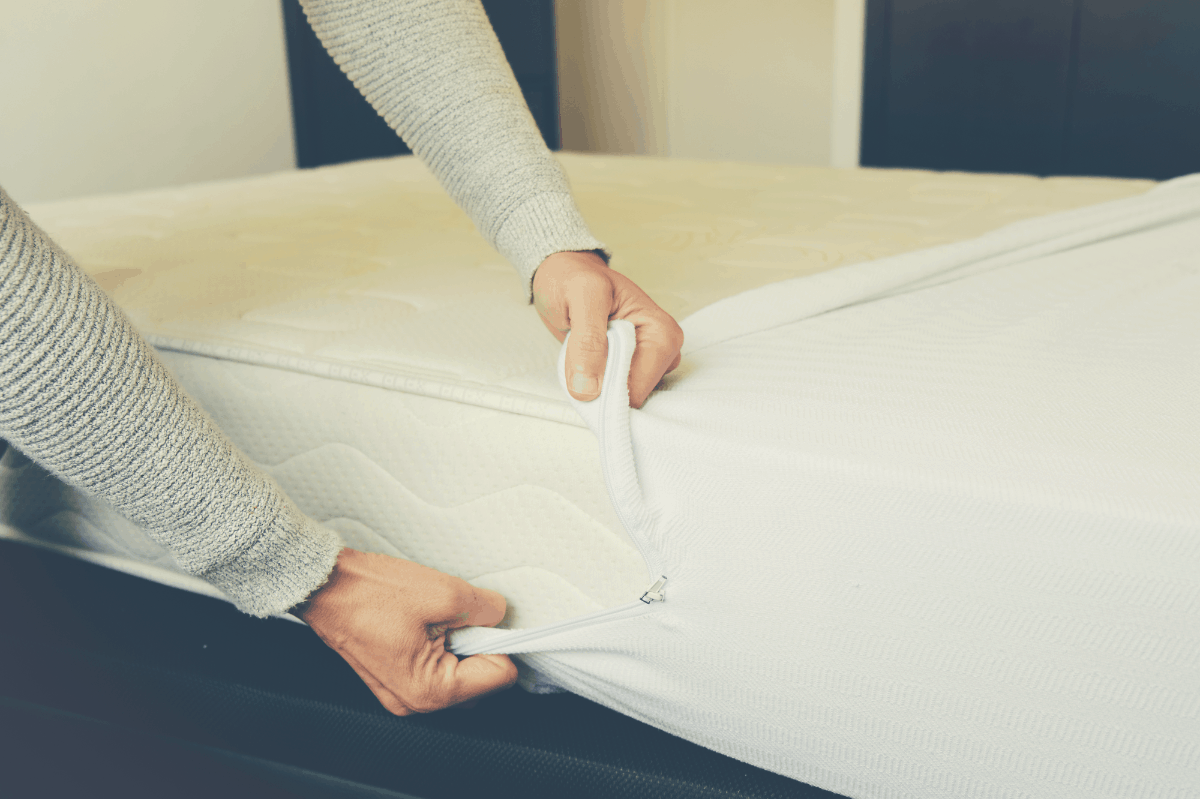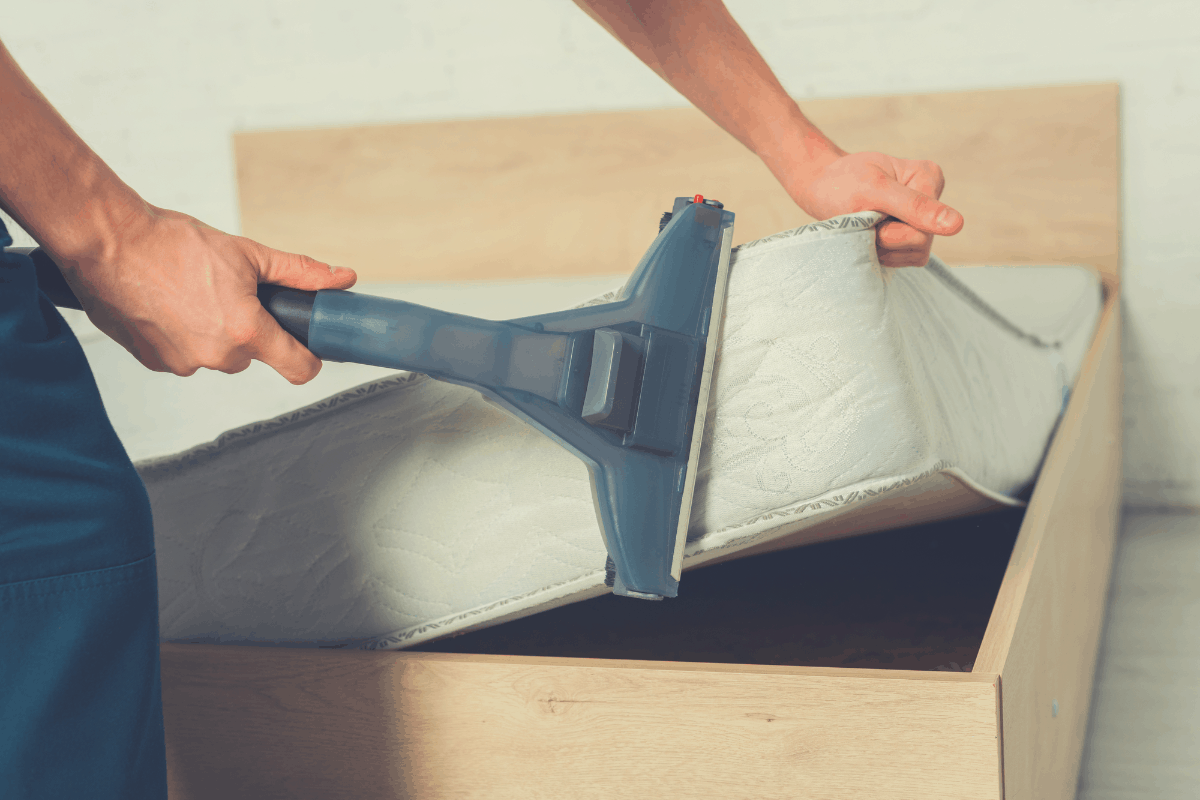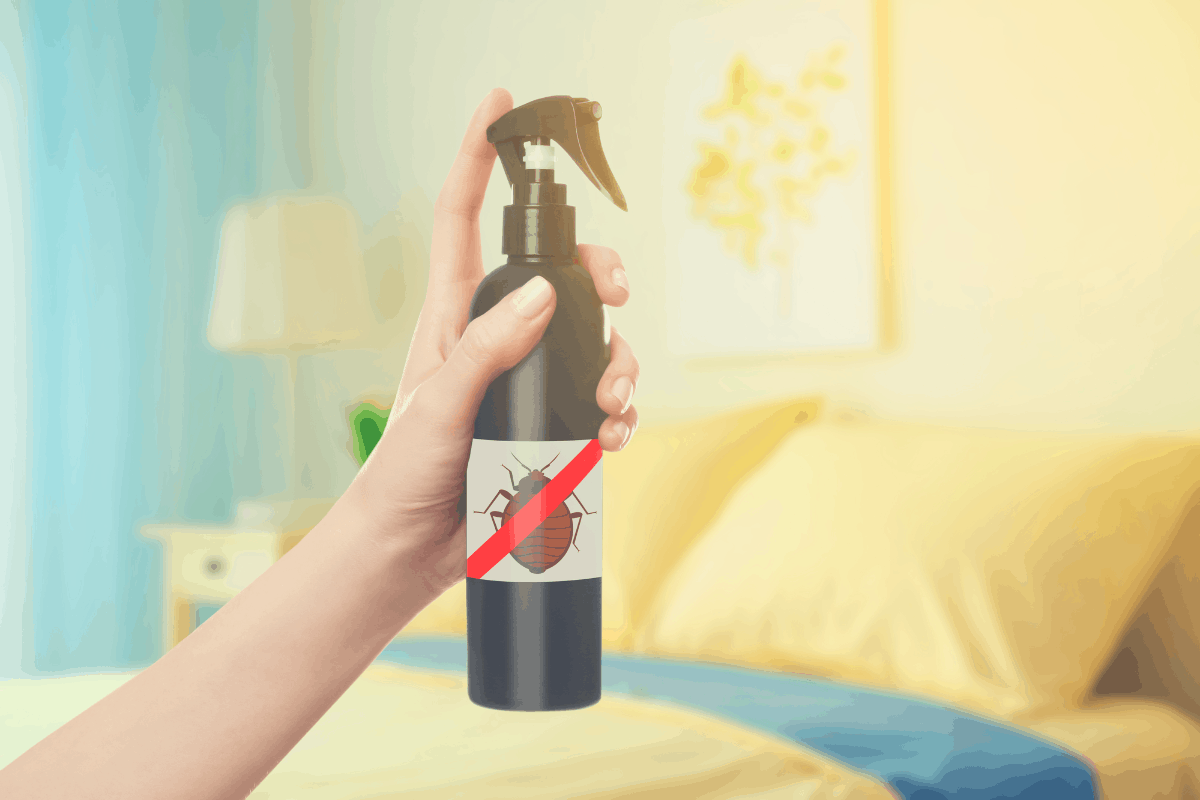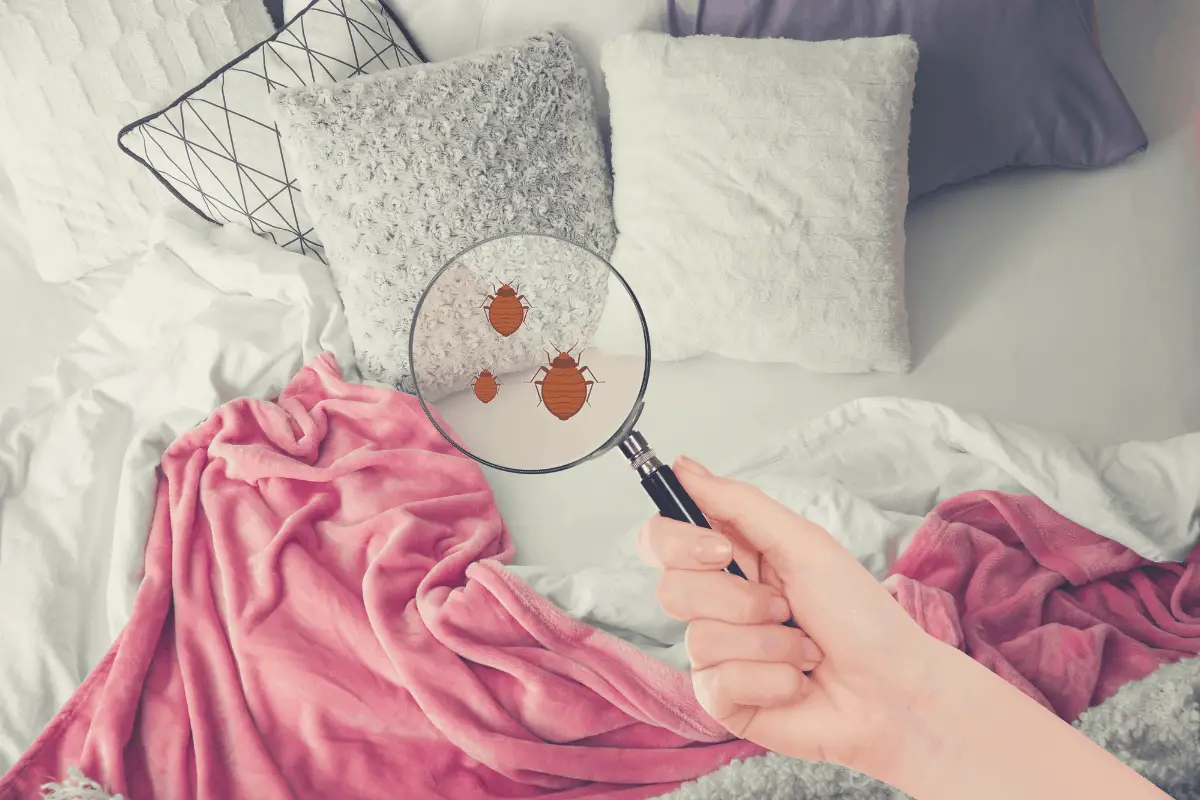Bed bugs can be everyone’s worst nightmare due to the ease with which they infest the home and affect the lives of every member of the household. These bugs require a host to thrive since they feed on human blood.
This why they love hiding and laying eggs in areas where they can get quick and unhinged access to your body. No wonder bed bugs love hiding in mattresses as the majority of us spend approximately 7-8 hours in bed every night.
The fact that you’re probably already tired before jumping into bed also means the bugs can have a field day feeding on your blood overnight while you’re busy savoring everything Dreamland has got to offer.
Most of us only become aware of the bites in the morning after waking up to signs on the neck, face, shoulders, hands, legs, and other areas of the body such as:
- Small red bumps surrounded with hives or blisters
- Small red bumps in a straight line or zigzag shape
- Raised itchy bumps
- Small blood spots from the bites
- Burning and painful sensations in the affected areas
Can Bed bugs go through a plastic mattress cover?
Bed bugs cannot go through plastic mattress covers as long as the covers are zipped properly and do not contain holes caused by manufacturing defects, human error, or natural wear and tear. Even in mattresses with existing huge bedbug populations, draping a cover around traps the insects to eventual death due to the lack of adequate food.
Experts recommend mattress covers as a preventative measure to keep bed bugs from getting into the mattress in the first place. For already infested mattresses, these covers can trap the bugs until they starve to death due to the lack of food sources.
One of the most common questions consumers ask is whether bed bugs can go through plastic mattress covers.
Can Mattress Covers Kill Bed Bugs?
Mattress protectors do not specifically contain any active ingredients or chemicals that kill off bed bugs or any other insects, unlike insecticides. Instead, these bedroom accessories can seal off the mattress from the sleeper’s body.
They typically come with zippered enclosures or other barriers that ensure that once they’re encased on a mattress, any existing bugs and their eggs are trapped for the foreseeable future.
This means the trapped bugs eventually die on their own due to the lack of human bodies to feed on. However, keep in mind that unlike other insects, bed bugs can be critically resilient.
While most insects starve to death within the space of days when cut off from food sources, bed bugs can survive up to a year in cold weather. This means leaving the plastic encasement on the mattress for as long as possible until you can be sure the bed bug populations have been eliminated.
There’s no point walking into a supermarket or logging onto Amazon to look for specific bed bug covers that kill the insects upon contact because they do not exist. Instead, choose models that offer adequate protection with the necessary barriers to keep bed bugs sealed once encased.
Such models also keep out external bugs from getting access to the mattress.
Can Bed Bugs Go Through Zippers?
The average size of an adult bed bug is 5-7 mm which is close to the size of an apple seed. This is pretty small which makes it easy for these pesky insects to go through even the smallest spaces. This can make many consumers wonder whether these bugs can penetrate the zippers found on plastic mattress encasements.
The good news is that bed bugs cannot go through the zippers found on the plastic mattress encasements available on the market today. This is because these zippers are not only smaller, they’re designed to ensure that there’s absolutely no space for even the tiniest bugs to penetrate.
If you’ve found a mattress cover that has been independently tested and certified to provide adequate protection against these insects, you can go ahead to order it. The fear of the bugs escaping through the zippers is far fetched.
The SafeRest Premium Hypoallergenic Waterproof Mattress Protector from Amazon offers protection against dust mites, molds, bacteria, allergens, and dust mites. It features a waterproof cotton terry membrane surface that is noiseless and breathable.
Can You Still Get Bed Bugs With A Mattress Cover?
 Mattress covers are designed to keep out external bed bugs from the mattress and seal off any populations of the insects which are already nesting and hiding in the mattress. However, this does not necessarily mean it can be the solution to all your bed bug infestation problems.
Mattress covers are designed to keep out external bed bugs from the mattress and seal off any populations of the insects which are already nesting and hiding in the mattress. However, this does not necessarily mean it can be the solution to all your bed bug infestation problems.
Note that bed bugs may hide in a wide variety of areas including inside clothes as well as under box springs and in various cracks and crevices in the home.
You’ll have to undertake additional measures to get rid of these insects from the home once there’s an infestation. Thinking that all your bed bug problems are over the minute your mattress is encased with a plastic mattress cover can be a mistake that may come back to haunt you.
Have you read the article we wrote on Can Bed Bugs Get In An Air Mattress? Click the link to get all your questions answered and learn some deep insights about air mattresses and bed bugs.
Can I Use A Mattress Encasement On A Box Spring?
Have you just discovered thriving populations of bed bugs in your mattress? If yes, chances are there are more of them hiding in your box spring. Sure, mattress salespeople always recommend that consumers order a plastic encasement when shopping for a new mattress.
However, the salespeople and sleep experts are typically silent when it comes to protecting box springs from bed bugs. So, can you use a mattress encasement on a box spring?
Well, nothing is stopping you from draping your box spring with a plastic encasement as long as the dimensions fit. However, that can be difficult to achieve in most cases.
The good news is that there are plastic encasements on the market specifically designed for covering box springs. These encasements provide adequate coverage against bed bugs as long as you know the size of your box spring and order the appropriate one for it.
Just like their mattress encasement counterparts, plastic bed bug covers also featured zippered enclosures that ensure that any bugs inside the box springs are sealed off while external ones are blocked from entry.
My box spring is now bedbug-free since I ordered the Hospitology Products Sleep Defense System Zippered Box Spring Encasement from Amazon 3 months ago. Installation is easy thanks to the stretchable 100 percent polyester fabric it features. It also keeps out dust mites, allergens, and dirt.
Where Do Bed Bugs Hide?
Bed bugs may be found inside mattresses and box springs but they hide in a variety of areas in the home as well. Some popular spots these insects may be found include:
- Bed frame cracks
- Headboards and footboards
- Electrical appliances
- Drawer joints
- The junction where the ceiling and wall meet
- Under loose wall and paper hangings
- Other cracks and crevices in the home
How to Get Rid of Bed Bugs From your Home
As stated above, getting a world-class plastic mattress cover can be a great start to protecting yourself from bed bugs while sleeping. But, that in itself does not eliminate the bugs from the home.
If you’ve already suffered an infestation, a lot more work has to be done to eradicate these pests from the home. Note that the insects breed quickly and the infestation may only get worse with each passing day.
Here are the best ways to get rid of bed bugs from the home.
1. Regular Cleaning

It is no coincidence that the majority of homes that suffer bed bug infestations are not exactly the cleanest. Cleaning the home thoroughly and regularly can ensure that higher populations of these insects are eliminated.
You may kill any adult bugs spotted during the cleaning job while regular vacuuming of the mattress can also offer opportunities to annihilate adult bugs and their eggs. Deep steaming of the floors in your bedroom and other areas of the home may also result in the additional killing of bed bugs that could be hiding under carpets and other areas.
Have you read the article we wrote on How To Clean A Used Mattress? Click the link to discover the top secrets to clean any type of mattress.
2. Setting Up Bed Bug Traps
Tired of bed bugs taking over your home? Why not set up traps all over the house especially around those areas they love to hide and nest? Bed bug lures and traps may work in a variety of ways to attract these pests unto them.
A popular type releases carbon dioxide through a chemical reaction once set. Since bed bugs love carbon dioxide, they’re attracted to the scent which draws them into the trap. This can be a convenient way to get rid of these insects from the home or at least reduce their populations significantly.
The bedbugs in my home now get trapped by the Ecopest Bed Bug Blocker Interceptor Traps from Amazon. It provides easy detection of the annoying pests so the right treatments can be formulated.
3. Insecticides and Poisons

Insecticides and poisons will always remain an effective way to eliminate bed bug populations at home or anywhere else. These insecticides contain chemicals that kill the annoying bugs upon contact or inhalation.
However, one of the biggest mistakes you can make is to pick up any insecticide spray on a supermarket shelf and think it can be an effective remedy for eradicating these pests. Instead, choose ones that have a bed bug label for the best chance of success.
If you have neighbors who have battled bug infestations recently, their input may help you choose the best bed bug insecticides on the market. Alternatively, researching online retail websites such as Amazon can help you discover insecticides that are proven to be effective for the cause.
The HARRIS Bed Bug Killer from Amazon has eliminated the most resistant bed bugs from my home since I began spraying last month. It features a chemical formula that kills even the toughest pyrethroid-resistant bugs and eggs that have built resistance to the popular pesticides.
4. Look Out for Bed Bugs Periodically
One of the biggest mistakes anyone can make after treating for bed bugs is to assume that the problem has been resolved forever. Bed bugs may be extremely resilient insects that can survive in conditions beyond explanation.
Even if you’ve treated the whole house with the strongest chemicals on the market, a few of the insects may have survived. These few could breed and restore the previous populations within a matter of months.
Thus, constant monitoring for any remaining insects and repeat treatments can be important in preventing future infestations.
5. Hire A Professional Exterminator
There’s no doubt that DIY bed bug infestation treatments continue to provide good results for many folks. However, the best way to eradicate these insects once and for all is to hire professional exterminators.
These professionals typically have lots of experience after dealing with hundreds or thousands of infestations. Not only do they know where to look but they can also formulate the right chemicals to annihilate the bed bug populations permanently.
Besides, professional exterminators may provide the right recommendations to keep future infestations at bay after treatments. Sure, their services can cost hundreds of dollars, if not more but the results often translate to good value for money.
Have you read the article we wrote on The Best Bed Bug Mattress Encasement: The Ultimate Buyer’s Guide.
Conclusion
Bed bugs cannot go through plastic mattress covers that are in good shape and have been zippered properly. These bugs are renowned for their super small bodies which result in the ability to go through even the tiniest spaces.
However, the zippers and other enclosures found in plastic mattress encasements are designed to be completely tight once closed. As long as you get the right plastic mattress cover, encase it on the mattress and close the zipper, you can be sure that it will seal off internal bed bugs while keeping out external ones completely.
